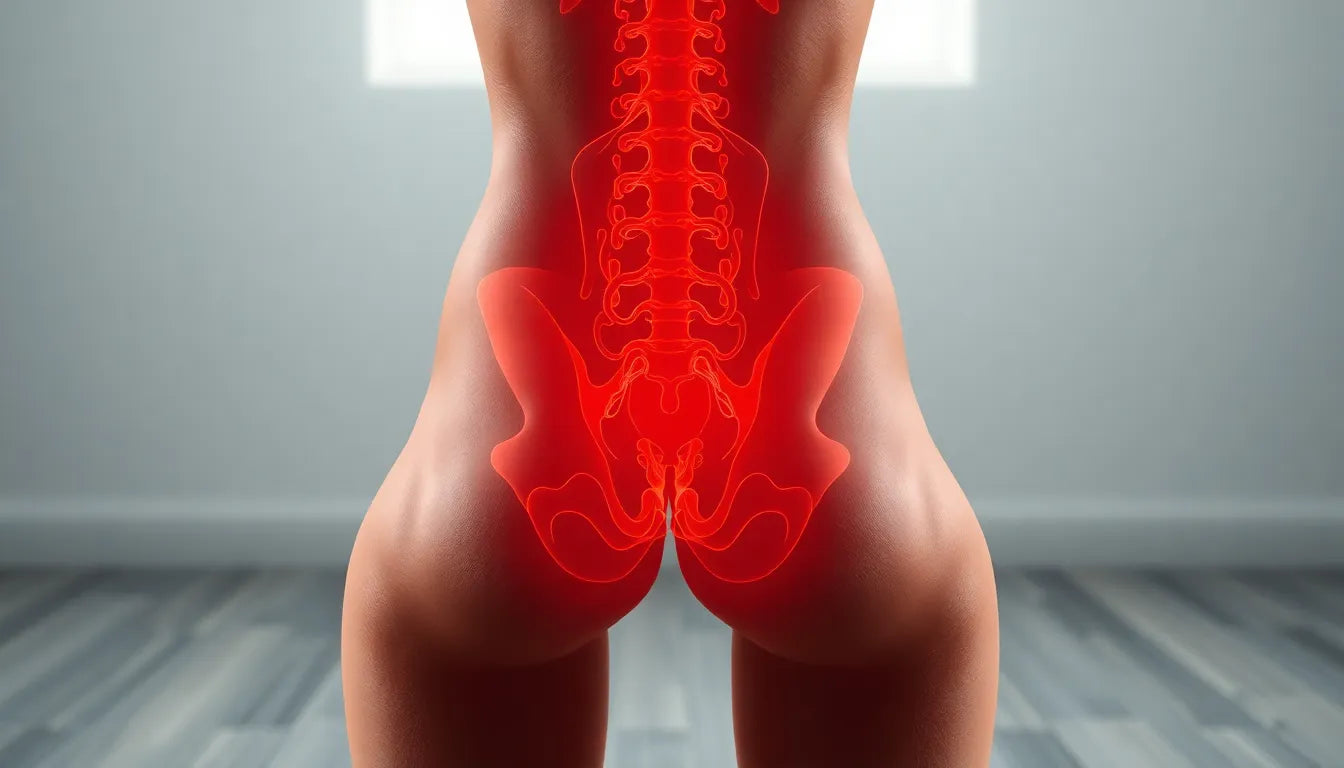Dealing with iskiassmerter, commonly known as sciatica, can be a challenging experience that affects many people at some point in their lives. Understanding the nature of this condition is the first step towards finding relief. Iskiassmerter refers to pain that radiates along the path of the sciatic nerve, which extends from the lower back through the hips and buttocks and down each leg. There are two main types of sciatica: true sciatica and false sciatica. True sciatica occurs when there is irritation of the sciatic nerve, often due to a herniated disc or spinal stenosis. False sciatica, on the other hand, is usually muscle-related, commonly associated with piriformis syndrome where the piriformis muscle irritates the sciatic nerve.
Prevalence and impact of iskiassmerter
Iskiassmerter is a prevalent condition that can significantly impact daily life. It is estimated that up to 40% of people will experience sciatica at some point, with varying degrees of severity. The pain can be debilitating, affecting one's ability to perform everyday tasks such as walking, sitting, or even standing for extended periods. This highlights the importance of addressing the condition promptly to prevent chronic pain and maintain quality of life. Targeted exercises are crucial in managing and alleviating the symptoms of iskiassmerter, offering both immediate relief and long-term prevention.
The importance of exercise in managing iskiassmerter
Exercise plays a vital role in relieving pressure on the sciatic nerve and improving overall mobility. Specific exercises can help reduce inflammation, enhance flexibility, and strengthen the muscles that support the spine. By incorporating these exercises into your routine, you can alleviate pain and prevent future episodes of iskiassmerter. Regular practice of targeted exercises not only helps in managing current symptoms but also builds resilience against potential recurrences.

Lumbar support belt
Supports and stabilizes the lower back, ideal for sciatica and herniated discs relief.
In conclusion, understanding the nature of iskiassmerter and the difference between true and false sciatica is essential for effective management. Recognizing the prevalence and impact of this condition underscores the need for proactive measures, particularly through targeted exercises. By incorporating specific exercises into your daily routine, you can take significant steps towards a pain-free life, improving your overall well-being and preventing future episodes.
choose your path: self-triage for iskiassmerter
Navigating the journey to relief from iskiassmerter begins with understanding your specific symptoms. This self-assessment allows you to choose the most effective exercise path tailored to your needs. Recognizing whether your pain originates from the lower back or is localized in the buttock can significantly influence the choice of exercises. For those experiencing back-originating pain, incorporating McKenzie press-ups and prone lying can be beneficial. These exercises focus on relieving pressure from the lower spine and promoting nerve mobility. Conversely, if your discomfort is primarily centered in the buttock and exacerbated by prolonged sitting, piriformis stretches and glute mobility exercises are recommended to alleviate tension and enhance flexibility in the affected muscles.
step-by-step instructions for effective iskias øvelser
1. mckenzie press-up (prone extension)
Begin by lying on your stomach with your hands positioned under your shoulders. Gently press your upper body upwards while ensuring that your hips remain grounded. Hold this position for 1–2 seconds before returning to the starting position. Repeat this movement 10 times. For optimal results, perform 1–2 sets of 10 repetitions, 4–6 times per day. This exercise is designed to centralize pain and enhance spinal extension.
2. prone lying
Lie face down for a duration of 5–10 minutes. If necessary, place a pillow under your hips to enhance comfort. This position helps in reducing pressure on the sciatic nerve, promoting relaxation and decompression of the lower back.
3. supine lumbar rotation
Lie on your back with your knees bent and arms extended out to the sides. Gently rotate your knees from side to side, ensuring that your shoulders remain in contact with the ground. This exercise aids in mobilizing the lower back without exerting excessive load.
4. figure-4/piriformis stretch
While lying on your back, cross one ankle over the opposite knee. Gently pull the thigh towards your chest to stretch the gluteal muscles. Hold this position for 30 seconds before switching sides. Perform 2–3 sets per side to effectively target the piriformis muscle.
5. knee-to-chest stretch
In a supine position, pull one knee towards your chest and hold for 20–30 seconds. Alternate sides to ensure balanced stretching of the lumbar and hamstring regions. This exercise aims to alleviate tension and promote relaxation in the lower back.
6. optional: foam roll and gentle nerve glides
Utilize a foam roller to target the piriformis and gluteal muscles, applying gentle pressure to release tension. Additionally, perform nerve glides with clear cues to avoid symptom flare. These optional exercises can complement your routine by enhancing muscle flexibility and nerve mobility.
By following these detailed instructions, you can effectively incorporate iskias øvelser into your daily routine, targeting specific areas of discomfort and promoting overall spinal health. Each exercise is designed to address different aspects of iskiassmerter, providing both immediate relief and long-term benefits. Remember to listen to your body and adjust the exercises as needed, ensuring that you work within your comfort zone to prevent aggravation of symptoms.
progression plan: from relief to resilience
Once you've begun to find relief from iskiassmerter through targeted exercises, it's important to focus on building strength and resilience to prevent future episodes. Incorporating strength-building exercises such as bridges, hip abduction with a miniband, and hip hinge drills can enhance muscle support around the spine and hips. Perform these exercises 2–3 times per week, ensuring you avoid any movements that reproduce pain. This progression not only aids in recovery but also fortifies your body against potential recurrences of iskiassmerter.

Men's Posture Shirt™ - Black
Patented shirt activates muscles, can relieve back pain, and improves posture awareness.
daily habits and ergonomics for iskiassmerter
In addition to exercises, adopting healthy daily habits and ergonomic practices can significantly impact your recovery and prevention efforts. Break up long periods of sitting or driving with regular breaks to maintain a neutral spine. Incorporate walking or cycling for 10–20 minutes daily to promote circulation and mobility. These practices help in reducing the strain on your lower back and sciatic nerve, supporting the overall effectiveness of your exercise routine.
when to seek professional care
While self-care exercises and lifestyle adjustments are valuable, there are certain symptoms that necessitate professional evaluation. Seek immediate medical attention if you experience progressive weakness, numbness in the saddle area, or changes in bladder or bowel function. Additionally, if there is no noticeable improvement in your symptoms within 2–4 weeks despite consistent exercise adherence, consulting a healthcare provider for a comprehensive assessment is advisable. Early intervention can prevent further complications and guide you towards a more tailored treatment plan.
frequently asked questions
how often should I do McKenzie exercises?
For optimal results, McKenzie exercises should be performed 1–2 sets of 10 repetitions, 4–6 times per day. This frequency helps in centralizing pain and promoting spinal extension effectively.
is it normal for exercises to cause pain?
It is common to experience mild discomfort during exercises, especially when starting a new routine. However, if the pain worsens or becomes severe, it is important to stop the exercise and consult a healthcare professional.
what is the difference between true and false sciatica?
True sciatica refers to nerve irritation often caused by a herniated disc or spinal stenosis, while false sciatica is muscle-related, typically associated with piriformis syndrome. The appropriate exercises differ based on these conditions, with McKenzie exercises often recommended for true sciatica and piriformis stretches for false sciatica.
can I continue other physical activities?
Yes, incorporating light physical activities like walking or cycling is encouraged alongside iskias øvelser. These activities can enhance circulation and mobility, supporting your overall recovery process.
when should I consult a healthcare provider?
Consult a healthcare provider if you experience any red flag symptoms such as progressive weakness, numbness in the saddle area, or changes in bladder or bowel function. Additionally, if there's no improvement in your symptoms within 2–4 weeks of consistent exercise, professional evaluation is recommended.
Kilder
- Yogaøvelser.dk. ”Iskias Øvelser.”
- Zency.dk. ”Øvelser mod Iskiassmerter.”
- Aalborg Rygklinik. ”Slip af med Iskiassmerter ved Hjælp af Rygøvelser.”
- Vejle Rygklinik. ”Iskiassmerter.”
- YouTube. ”Iskiassmerter Øvelser.”
- Netdoktor.dk. ”Øvelser mod Iskiassmerter i Ryg og Balde.”
- Rigshospitalet. ”Iskiassmerter med Blokade - Behandling.”


















